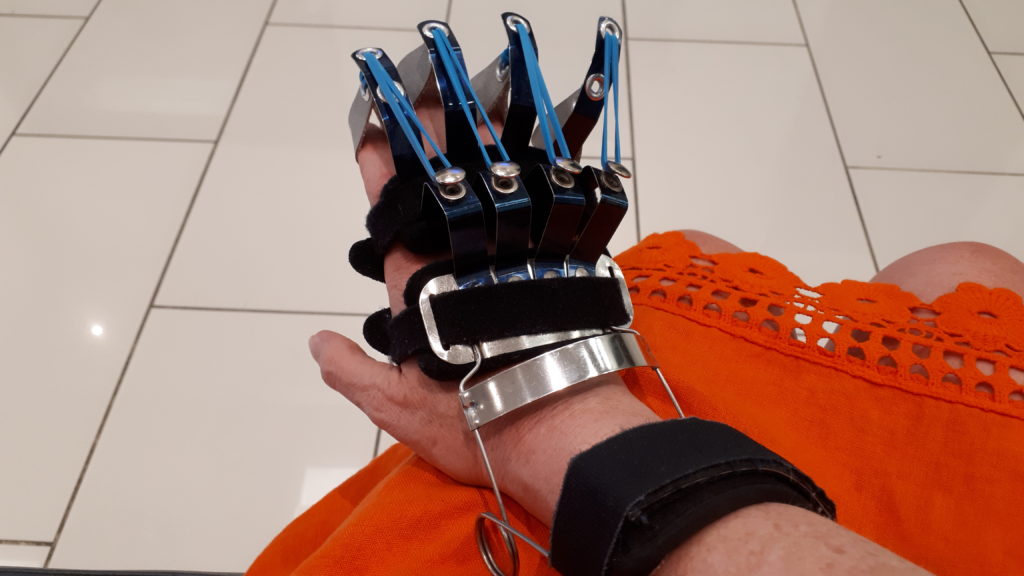A brand-new definition of pain has just been released, by the International Association for the Study of Pain (IASP). Well, actually it’s only a proposed definition, and you still have a chance to comment on it.
If you’re interested in doing that, please read my post on pain comments. The IASP already has a definition of pain, but they wanted to update it. This is the version they wanted to replace:
An unpleasant sensory and emotional experience associated with actual or potential tissue damage, or described in terms of such damage.”(1)
It doesn’t seem like much, but the definition comes with what the IASP calls accompanying notes. In a way, the notes may actually be more important than that brief definition, because they provide guidance on how to interpret the definition.
You can read the definition and notes – both the current and proposed versions – on the IASP website. You can also send your own comments to the IASP, using an online service. The “form is open to any member of the pain community and not restricted to IASP members”.(2) This link will bring you directly to their page for the definitions, in case you’d like to comment on this proposal:
https://www.iasp-pain.org/PublicationsNews/NewsDetail.aspx?ItemNumber=9218
To gather some feedback – from healthcare professionals, pain researchers, and the public (including patients and caregivers) – there was a Canadian Twitter chat tonight. This chat discussed the proposed new definition, as well as the accompanying notes. The IASP’s new – proposed – definition of pain is:
An aversive sensory and emotional experience typically caused by, or resembling that caused by, actual or potential tissue injury.”(1)
For my readers who don’t use Twitter, I’m providing a quick bullet-point summary of what I had to say during this chat. These comments aren’t meant to represent all patients dealing with chronic pain, or even with CRPS; they’re my perspectives ‘-)
There was a series of planned questions, to separately gather comments on the proposed definition and then on each on the accompanying notes. The hashtag for the chat was #DefinitionOfPain; if you Google it you’ll probably be able to scroll though most of the tweets from tonight. Maybe even all of them!
When I had room, within the character limit of a tweet, I’d include the hashtags for #ChronicPain, #CRPS, and #RareDisease. For some of them, I included #bioethics as well. To save room in each tweet, I use abbreviations and acronyms.
To make these bullet points easier to follow, I’ve written out the entire words in this post, and added some of the words that I’d left out ‘-) Whenever I was referring to a medical journal article, I included the link to it; I’ve done the same below.
The Twitter questions were numbered 1 through 8, so the A1, A2, etc. at the start of each tweet shows which question I was replying to. There can be more than one reply for each question, so if you see A4 twice, it’s not a mistake 😉 Here goes:
A1 I’m disappointed at the lack of #ChronicPain cognitive issues, work ability e.g. #CRPS:
“Cluster analysis of 500 patients”;
36% normal neuropsychologically
42% mild dysexecutive deficits
22% cognitive impairment in executive function, naming, memory
https://www.practicalpainmanagement.com/pain/complex-regional-pain-syndrome-systemic-complications
A1 In response to a question from another participant, talking about the word “aversive” in the definition:
I’m not convinced that “uncomfortable” would encompass neuropathic #ChronicPain, e.g. #CRPS. The definition of pain can’t not be applicable to chronic pain conditions…
A1 I prefer aversive, as seemingly less ‘controllable’ [“just ignore it, it’ll go away!”] than merely unpleasant. From the perspective of a #CRPS neuropathic #ChronicPain
A2 It is NOT “always” subjective – #CRPS includes some fairly bizarre & remarkable clinical signs. And yes, I realize that I’m conflating disease with ‘pain’ but I can’t logically separate them in context of CRPS
A3 Not 100% on board, given that:
“The results demonstrate that patients with #CRPS-I show a sensitization of the nociceptive system in the course of the disease”
https://www.ncbi.nlm.nih.gov/pmc/articles/PMC4858201/
A4 A tad oversimplified, perhaps.
Reminds me of this piece in Psychology Today magazine, which is staggeringly unhelpful for long-term #ChronicPain
https://www.psychologytoday.com/intl/blog/what-mentally-strong-people-dont-do/201511/5-reasons-you-have-accept-pain-if-you-want-be-happy
A4 If neonates can experience pain – a position against which I dare anyone to argue! – then the reference to life experiences falls rather flat…
A5 Failure to do so would be a failure from my #bioethics perspective, in terms of the principle of respect for autonomy:
If not, against what would we evaluate pain?
And can we *please* get a cease/desist on “pain catastrophizing”?
A5 From my bioethics perspective, the terminology of catastrophizing is patronizing… even if not meant to be. It’s the name I take exception to. The terminology used shouldn’t alienate patients… ideally
Q7 This one seems fine to me!
A6 In my view, this AGAIN understates the impact of #ChronicPain on life:
“Although pain usually serves an adaptive role, it may have adverse effects on function & social and psychological well-being”
Particularly because
“Depression, extent, and duration of illness did not correlate with these cognitive changes” + “in CRPS patients, there may be structural brain changes, as demonstrated in other severe neuropathic pain states”
https://www.practicalpainmanagement.com/pain/complex-regional-pain-syndrome-systemic-complications
I’d like to see something like this, from HealthLink British Columbia, in the Notes section for #ChronicPain:
“some people may not recover and may be left with long-lasting pain and disability”
https://www.healthlinkbc.ca/health-topics/abn2964
Thanks to Dr. Andrea Furlan, Dr. Fiona Campbell, and Dr. Paul Winston for hosting #DefinitionOfPain – and for once again championing the #PatientsIncluded philosophy by doing this on Twitter & open to patients – And to everyone else who joined in, for all the thought-provoking comments!
Those are the tweets that I wrote, and some of the messages I wrote in response to questions or comments I received from other participants during the chat.
One of the goals of a TweetChat is to have the chance to read opinions that are different from our own. It’s a fantastic opportunity to learn from others, by reading what they reply to a specific question. It’s like a conversation, but in writing, with a big group of very interesting people. And everyone gets to say something!!!
“Top 3”
On that note, here are my “Top 3” tweets from other participants during tonight’s chat. Some of them expressed ideas that I was hoping or trying to convey, but much more eloquently; they simply said it so much better!
Dr. Tara Packham:
A1 I think aversive is better than unpleasant, need to distinguish pain from other dysesthesias or intense somatosensations
Dr. Fiona Campbell:
A6 This is problematic! Suggest rephrase: Although ACUTE pain usually serves an adaptive role… CHRONIC pain does not – these need handling separately. One is a symptom and one can be a disease. Definitely different.
Dr. Fiona Campbell:
A8 An “accompanying note needed to help separate acute pain (symptom) from chronic pain (disease). I know this is clear in new diagnostic categories – but needs teasing out in definition as thes[sic] are completely different entities”
If you have any comments of your own on the proposed definition, or agree/disagree with any of mine, please take a few minutes to send your very own comments to the IASP.
The new definition will apply to chronic pain patients, so it’s important that we tell them if there’s anything we’d like them to change – before the proposed version is finalized!
As always, thanks for reading! Because it’s late tonight, I’ll wish you many moments of kindness in your day – for tomorrow ‘-)
References:
(1) Srinivasa Raja (Chair) et al; IASP Definition of Pain Task Force. IASP’s Proposed New Definition of Pain Released for Comment. International Association for the Study of Pain (IASP). 07 Aug 7 2019. Online. Accessed 08 Aug 2019. Web:
https://www.iasp-pain.org/PublicationsNews/NewsDetail.aspx?ItemNumber=9218
(2) Srinivasa Raja (Chair) et al; IASP Definition of Pain Task Force. Request for Public Comments on the New Proposed Definition of Pain. International Association for the Study of Pain (IASP); via SurveyMonkey. 07 Aug 7 2019. Online. Accessed 08 Aug 2019. Web:
https://www.surveymonkey.com/r/definitionofpain


